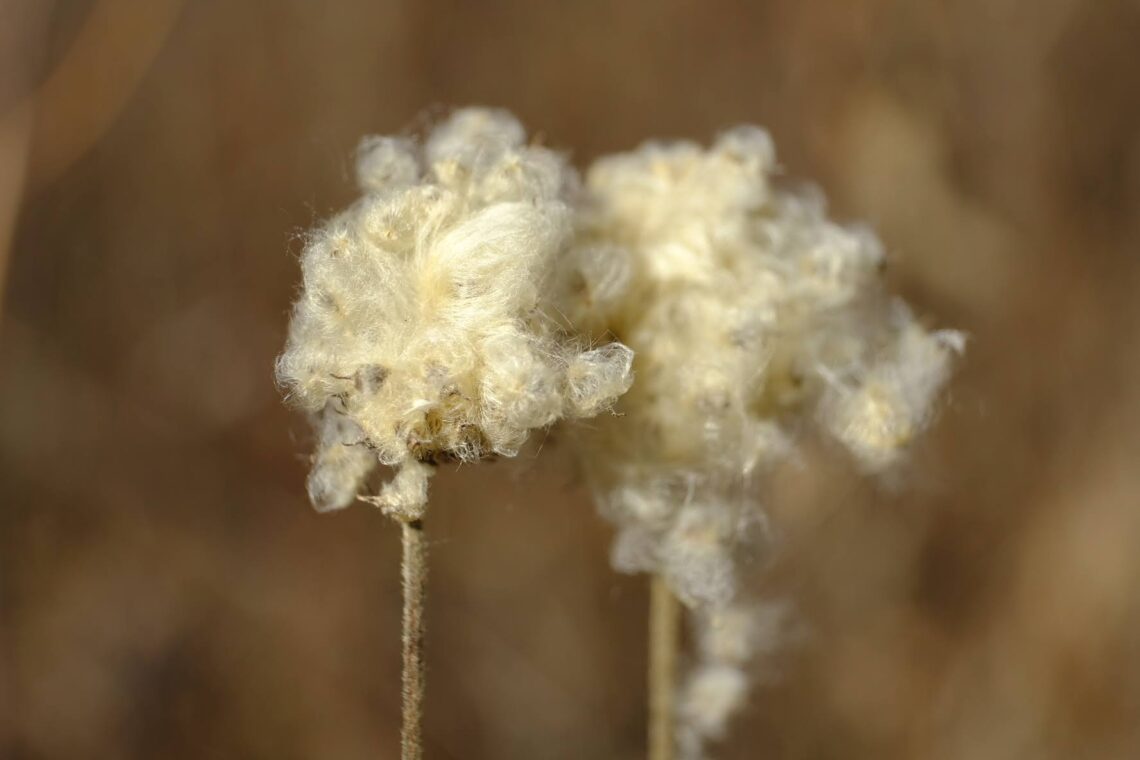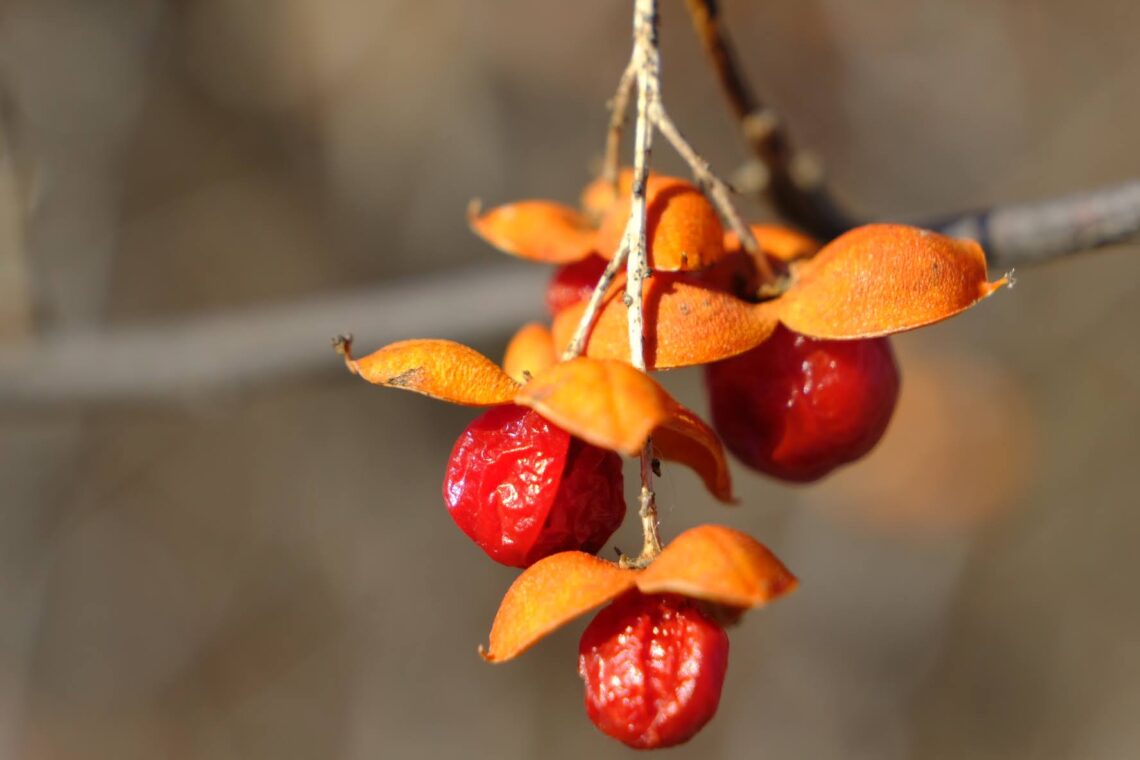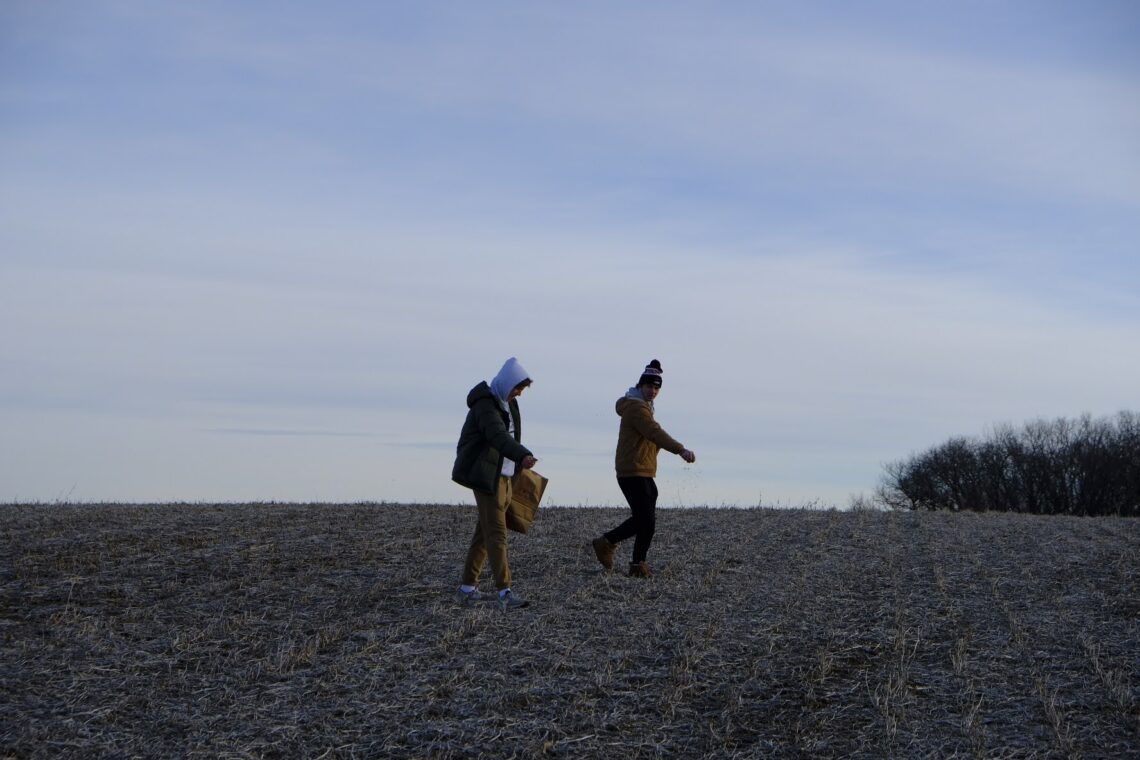We’re in the midst of the holiday season and I couldn’t think of a better reason to get out and explore nature. Whether you’re finally finishing up the turkey leftovers in the fridge or getting ready to start decorating your yard with lights and snowmen, you should take a short break and go for a hike. You probably won’t see any flowers blooming or warblers singing, but there’s still a world of beauty waiting for you out there, so let’s check it out!
One of the more peculiar flowers to set seed in the fall is thimbleweed. Its cotton or cloud-like fluff contains dozens of seeds nestled within. If you hold the fluff up to the sun, you can even see the individual seeds inside. It’s one of my favorite plant species to collect seed from in the fall because of how soft it is and it can remain on the plant all winter!
If you have spent just about any amount of time outside lately, you probably have noticed the chatty squirrels. Red squirrels in particular can be very vocal and are often seen chasing off other species of squirrel that are twice their size. They are extremely territorial which makes sense if you think about how much of their time is spent storing nuts and seeds so they have a food source to survive the winter.
Most of the colors that you experience towards the end of fall tend to be a little less vibrant than when fall is just beginning, so when you come across a patch of plants that are clementine orange and cherry red, your jaw just drops. That’s what happened to me last week while out on a hike with my family. I actually stopped in my tracks to investigate what was going on.
It turns out, the plant is a twining vine called American bittersweet and it is in fact sweet! I have a bad habit of tasting things that I find in nature and after tasting these sweet berries my wife Carolyn informed me that they are in fact poisonous. That’s why I keep her around! So if you find some American bittersweet on your next hike, it’s best to simply admire the colors rather than the taste.
Lastly, I’ll leave you with something to look forward to when spring rolls around. Did you know that now is one of the best times of year to plant a prairie? In fact, we just planted 5.5 acres out at Westport Prairie this week. Many prairie plant species require a process called stratification. Simply put, this process involves sowing seeds in the late fall or winter so that they are exposed to the cold for several months. Once the seeds have gone through this cold period, they are ready to germinate come spring.
Well, I hope you enjoyed my virtual tour of nature as it’s happening. However you experience the outdoors or nature, be it physical, virtual, spiritual, or anything in between, I encourage you to do it!
*Did you miss an article? Check out my collection of past monthly Nature Now articles on our website HERE. Just click the dropdown menu ‘Any Type of News’ and change to ‘Nature Now’ to filter the articles.
See you next month!




